During the ancient Olympics, athletes ran, jumped, wrestled and boxed barefoot.
We’ve come a long way from that.
Today's Olympic footwear ensures the world’s greatest athletes have the protection and support on their feet needed to enhance their performance.
We are taking a look at what elite athletes put on their feet when they go for gold at the Paris Olympics.
Marathon
New Balance FuelCell Pacer v2 worn by Emily Sisson
Rowing
Yes, Olympic rowers wear shoes. Here's what they look like:
Climbing
La Sportiva Solution worn by Brooke Rabatou
Skateboarding
Cariuma Vallely worn by Jagger Eaton
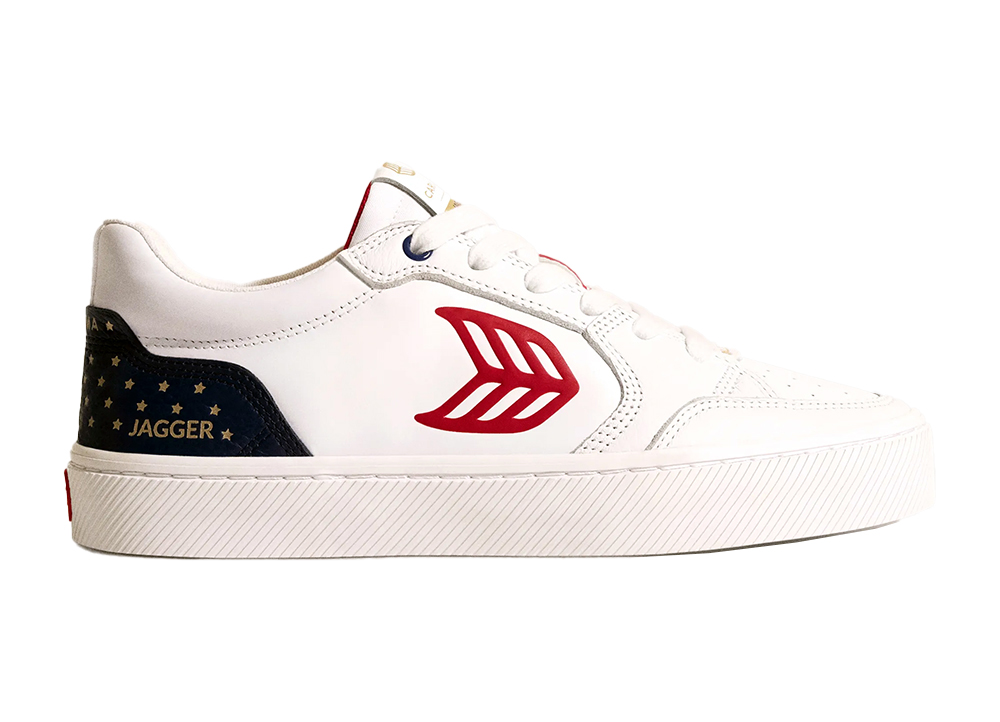
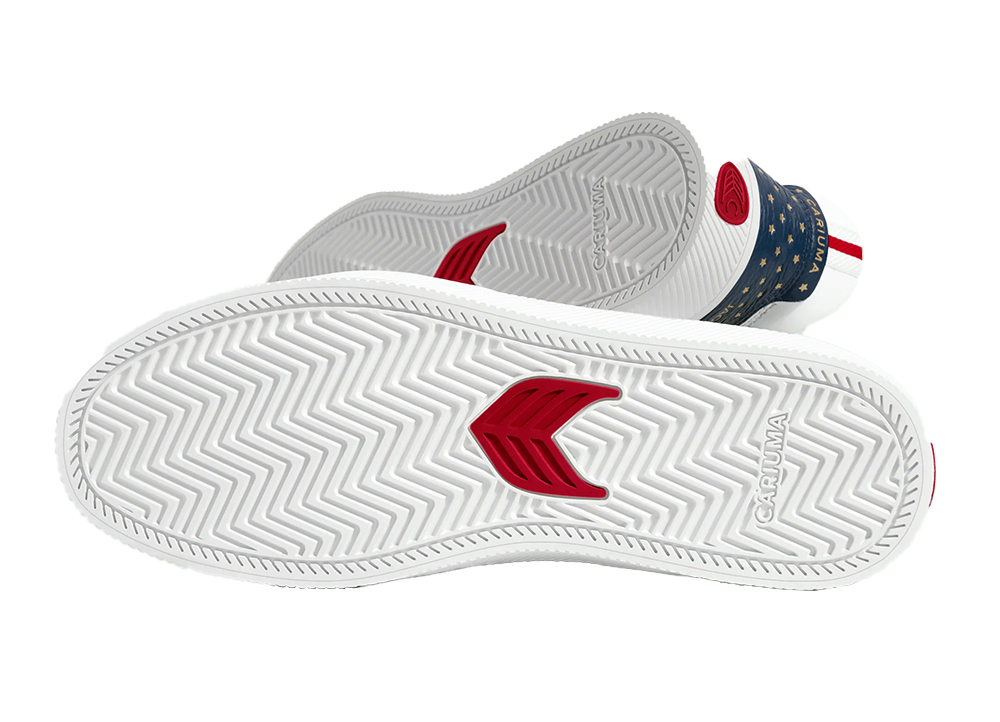
Skateboarding shoes have slip-resistant soles, which give skaters maximum grip on the board while still maintaining flexibility. Many skaters choose a vulcanized sole, which allows better boardfeel for tricks. (Photo: Cariuma)
Cycling
Team USA's Kristen Faulkner shares the five things she looks for in cycling shoes:
Bontrager XXX Road Cycling Shoe worn by Taylor Knibb
Basketball
Adidas Anthony Edwards 1 Low worn by Anthony Edwards
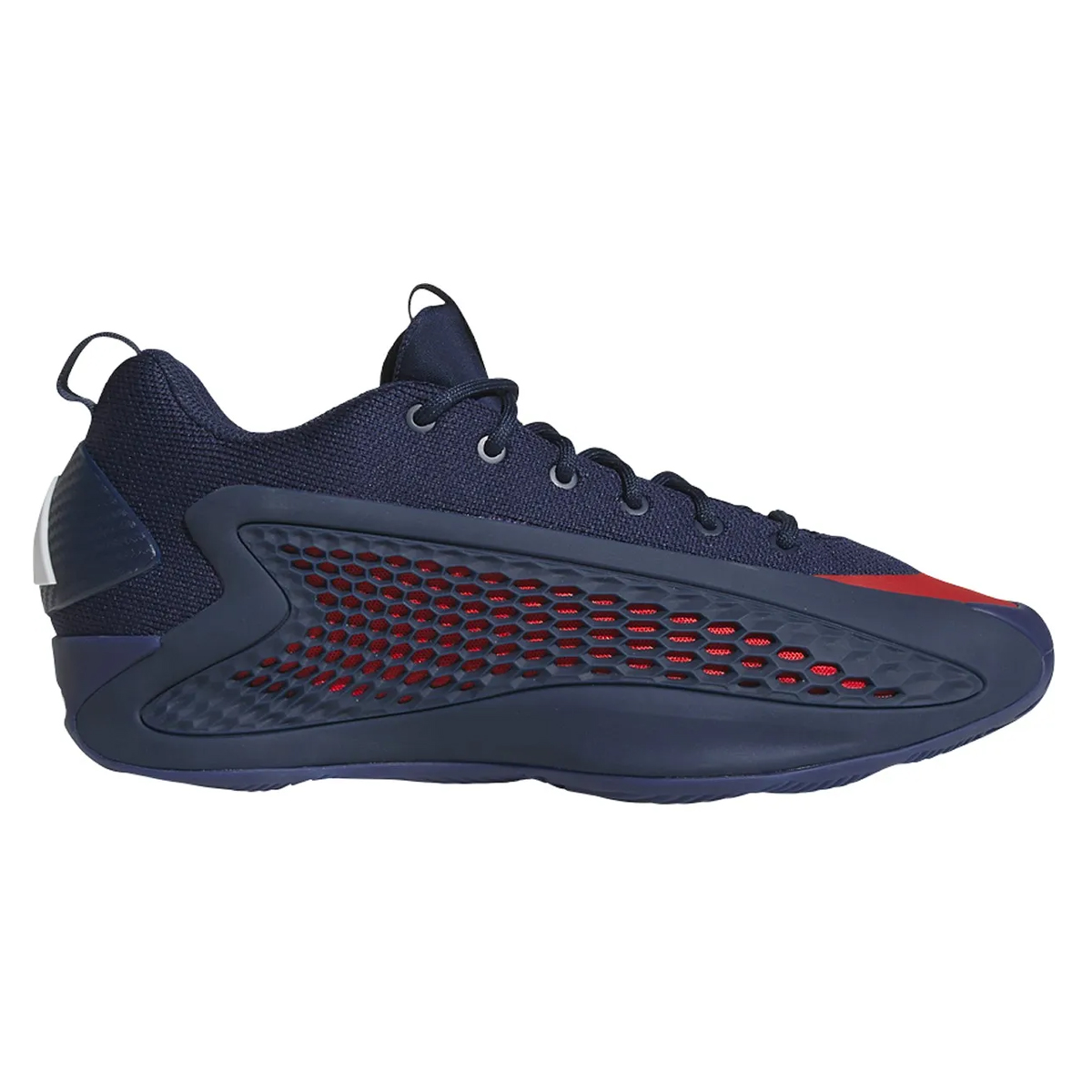
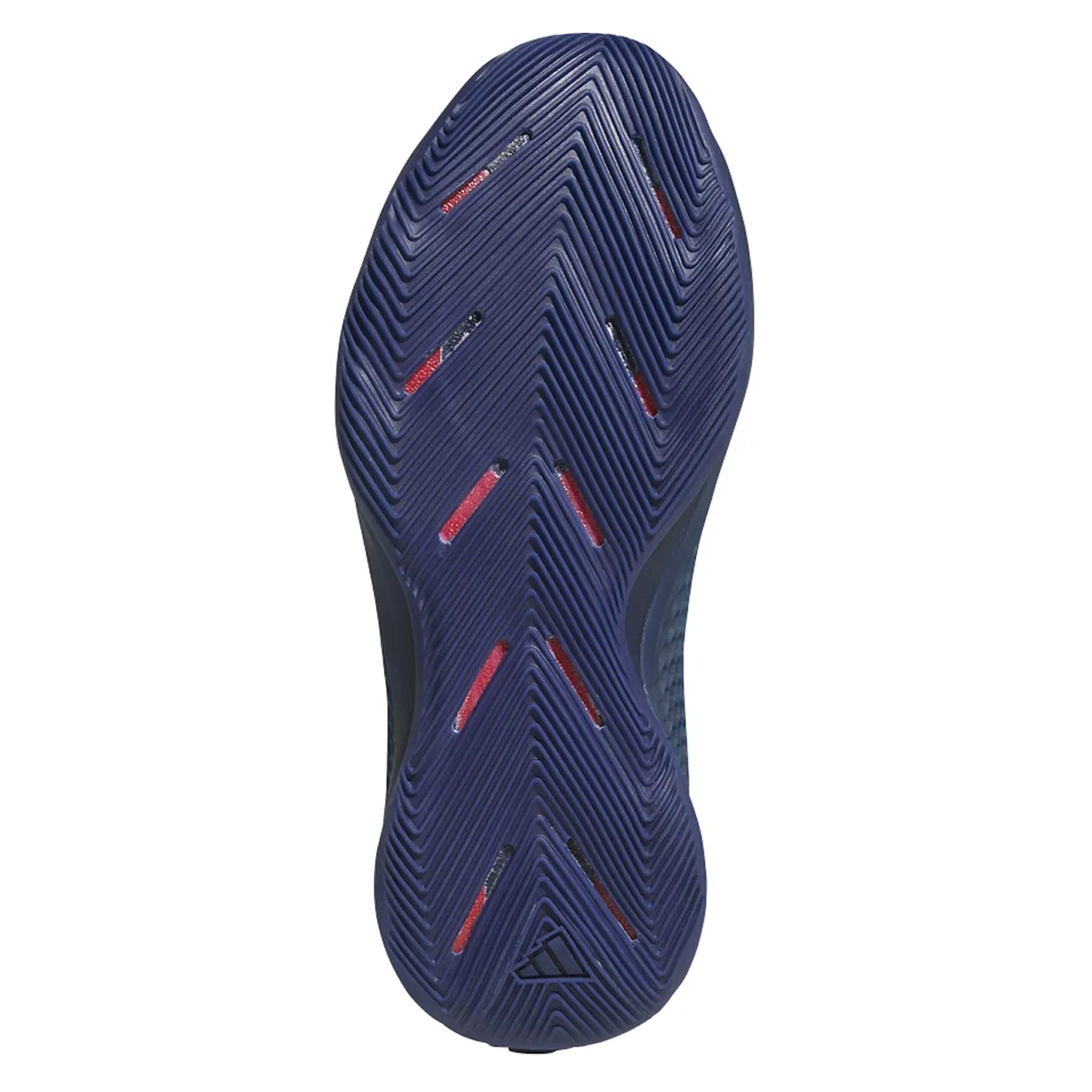
Basketball shoes evolved from the simple and iconic Converse Chuck Taylor of the '70s to the style we know today in an effort to provide more support to players’ joints.
The AE 1 features a unique upper that Adidas calls a "generative support wing" made of TPU. The innovative use of thermoplastic polyurethane in the shoe's upper provides the stability and containment players like Anthony Edwards need in order to move powerfully in all directions without sacrificing support or breathability.
These kinds of supportive uppers paired with traction inducing herringbone-like designs on outsoles give players the ability to quickly change direction while preventing literal ankle breaking moments. Most basketball sneakers feature a wide, foam insole to absorb impact and accommodate motion control. (Photo credit: Adidas)
Tennis
How are tennis shoes different for clay courts?
Wilson Rush Pro 4.5 worn by Marta Kostyuk
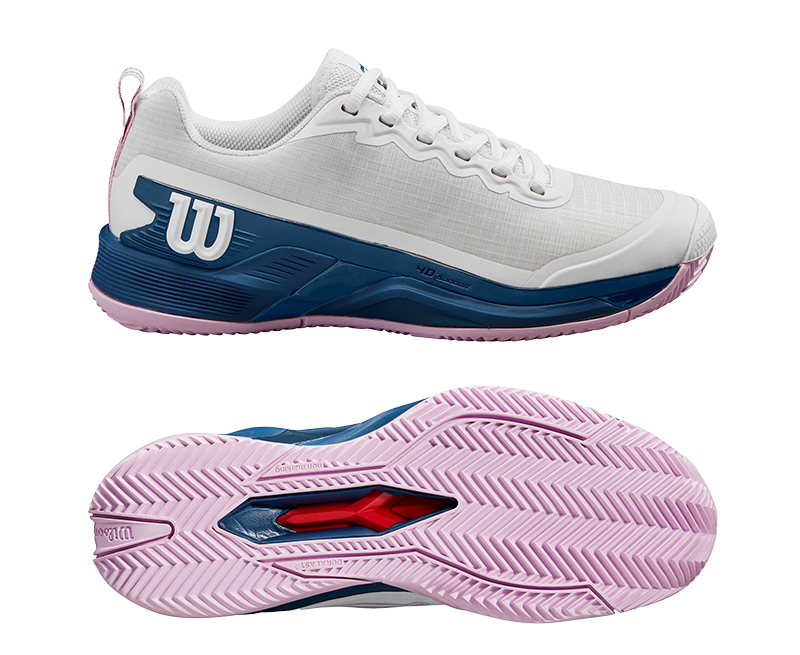
Clay court shoes
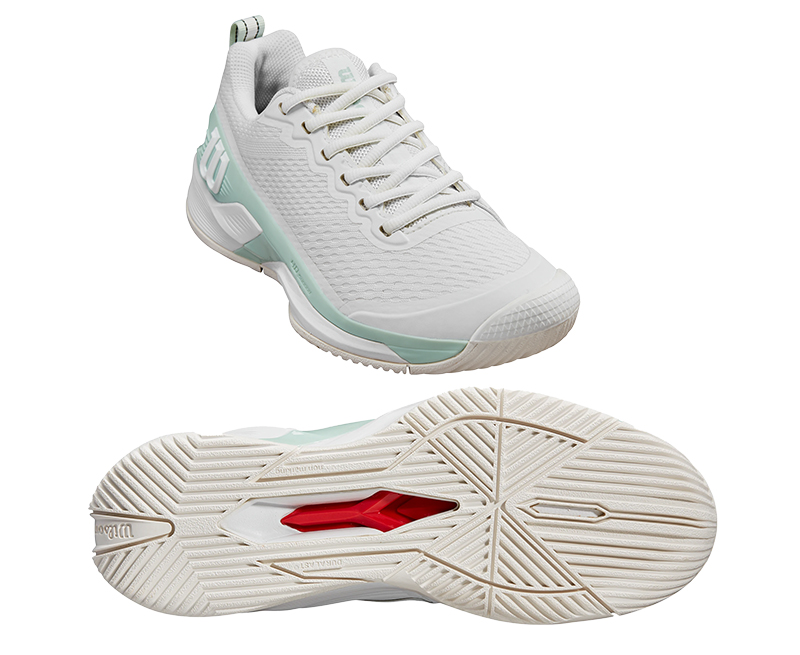
Hard court shoes
The biggest difference in a clay court shoe is that the tread on the bottom has a herringbone design that lets players slide a little bit easier. The upper is sometimes less porous to prevent fine particles from the clay court getting into the shoe. (Photo credit: Wilson)
Field Hockey
Asics Gel-Lethal MPG
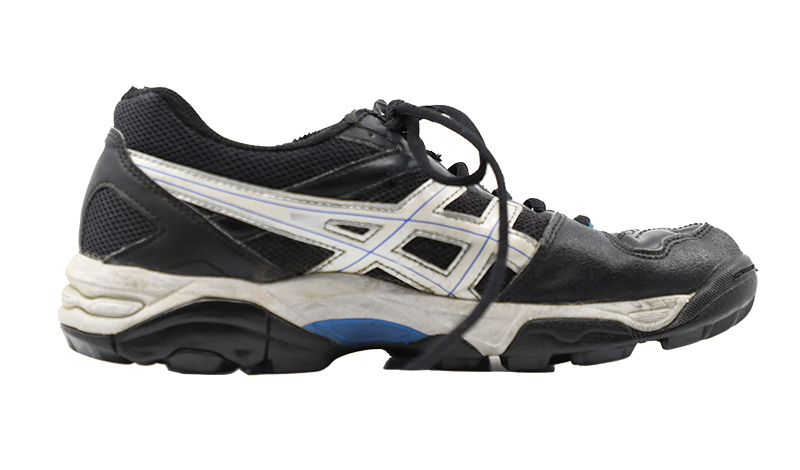
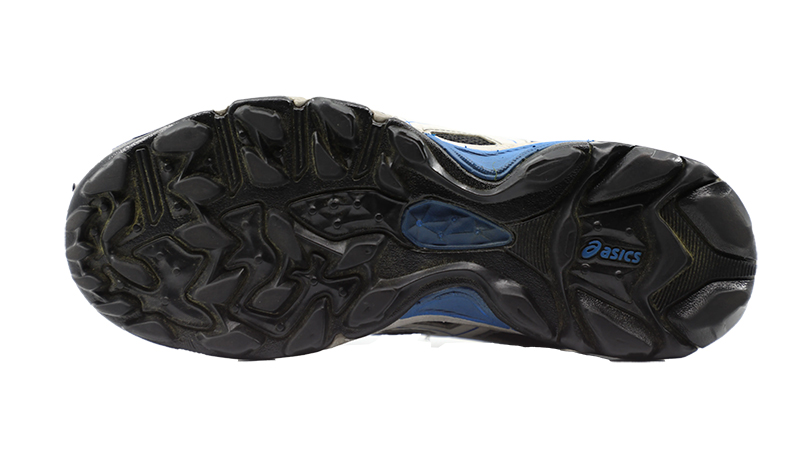
The cleat varies for turf or grass fields, but overall field hockey shoes have padded midsoles, ankle collars and a toe cap to protect the foot from injury. The hard outsole with cleats gives the athlete traction.
Track and Field - Sprinter's Spikes
New Balance FuelCell MD-X v2 worn by Gabby Thomas
Track and Field - Throwing Shoes
Nike Zoom Rival SD 2
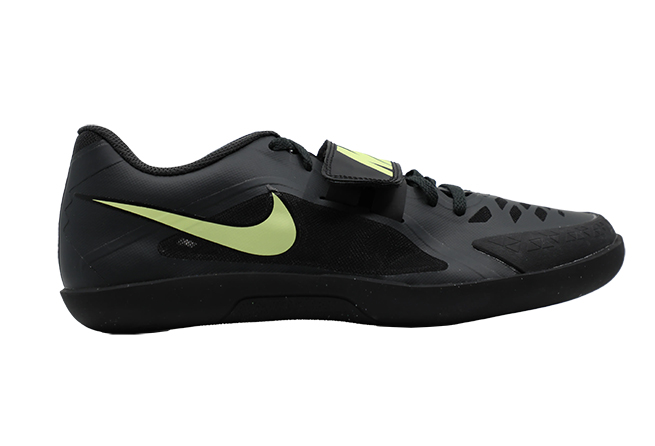
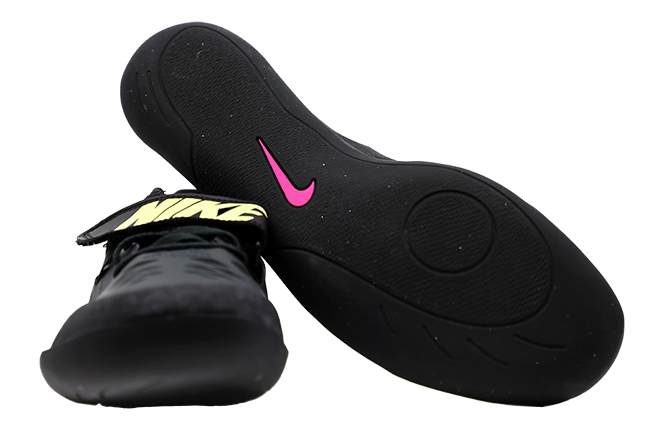
Throwing shoes have smooth outsoles that allow for quick rotations when throwing, in discus, for example.
For sports like javelin, the smoothness is counteracted with a grippy material on the outsole and a rubber toe help athletes keep their feet planted when necessary for a more stable throwing base.
The velcro mid-foot strap makes sure that the foot does not move in the shoe, providing more stability and security. Stability is key to maximize explosiveness in the throw.
A flat foam sole, made from materials like Pebax, with minimal cushioning further aid in stability. Throwing shoes are designed to aid in lateral and rotational movements rather than forward motion like other track and field shoes.
Track and Field - Jumping Spikes
Nike Zoom Rival Jump
Breaking
Puma Suede Classic XXI
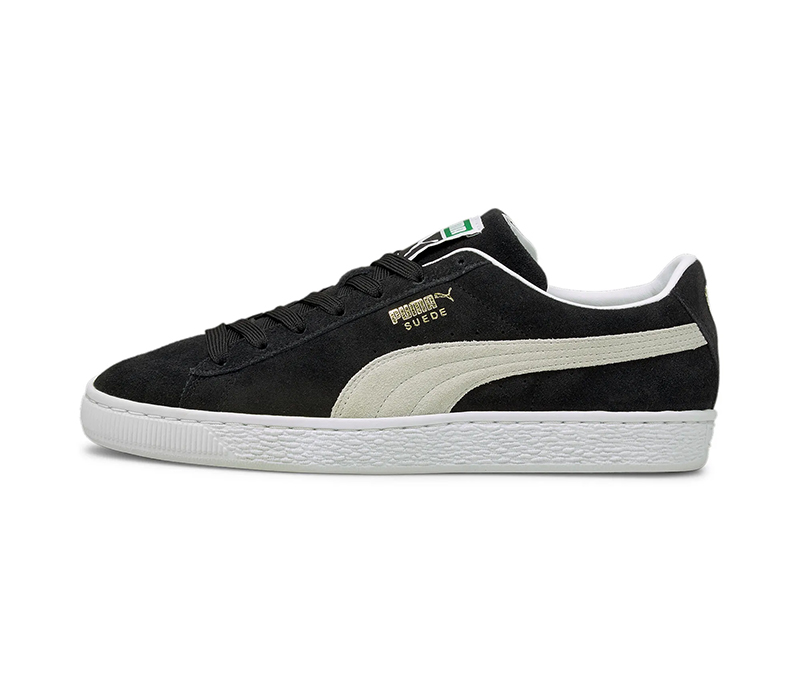
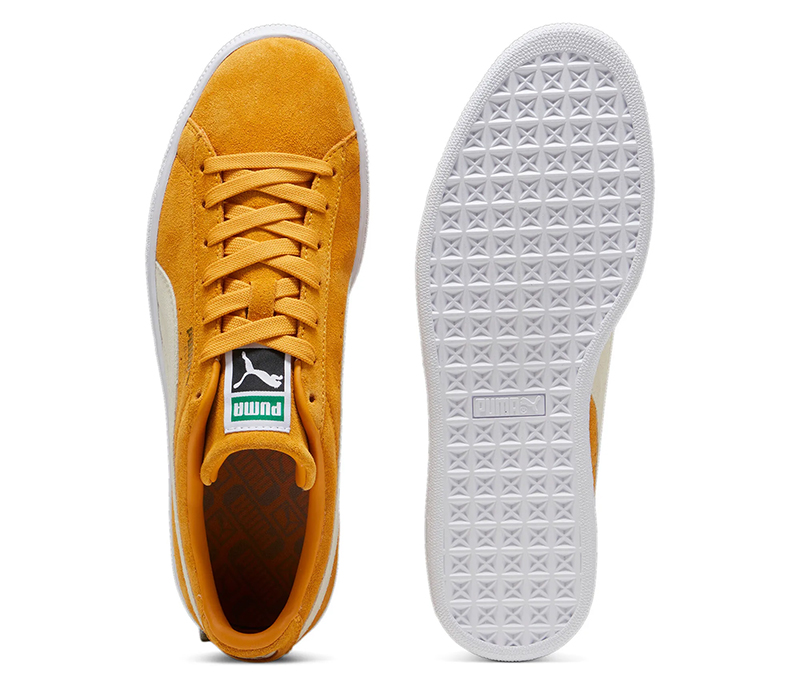
Sneakers need to be lightweight and flexible for quick movements, and outsoles need to provide grip while still allowing for diverse movement. The specific style of the shoe varies from athlete to athlete, however some level of support in the midsole is needed for comfort. (Photo credit: Puma)
Other shoes

Athletics (race walk)
Running race flats are low profile and have flexible soles to allow walkers to maintain a “heel-toe” movement without resistance.

Badminton
Regular tennis shoes tend to scuff badminton courts, so players favor shoes with anti-slip rubber soles. Badminton tends to have more jumps and lunges than tennis, requiring a shoe with less padding for a lower center of gravity to prevent injuries.

Boxing
Most boxing shoes feature a high-top style to provide more ankle support for maximum stabilization. Shoes are made with lightweight materials (such as rubber) to allow for the athlete's agility while providing grip.

Canoe and Kayak
Wet shoes are waterproof, lightweight, durable, and nonslip for maximum efficiency.

BMX
Efficient propulsion is produced from the fastening of the foot on the pedal. However, some athletes opt for shoes with a rubber outsole for pedal feel and comfort.

Equestrian (Dressage)
Dressage boots are made of stiffer leather with little flexibility so may not be suitable for jumping. They normally feature a heel to prevent the riders’ foot from slipping forward in the stirrup.

Equestrian (Jumping)
Field boots are made of soft leather and have a lace system that allows for the rider to achieve the heels-down position fit for jumping.

Fencing
Fencing shoes are set at an angle to absorb impact from movements such as the lunge. Shoes have reinforcement on the sides and the midsole that supports diverse movement. (Photo: Getty Images)

Golf
Golf shoes have wide soles with a low toe-drop, as too much cushioning will distribute weight forward and throw off balance when swinging. Spikeless shoes have a flat outsole with a rubber pattern of studs to provide stability for swings. (Photo: Getty Images)

Gymnastics (Trampoline)
Thinly soled, slipper-like shoes that protect the foot from burns and scrapes. They also provide traction to prevent slipping on the trampoline. (Photo: AP)

Gymnastics (rhythmic)
Toe shoes are worn to provide the correct amount of grip and slip on the carpet for controlled movements such as turns. Made of lightweight materials, they let feet exercise flexible movement. (Photo: Getty Images)

Handball
Soles are designed for quick stops and quick, diverse movement. The toe cap on the shoe is designed to prevent drop and has cushioning to assist with sprinting. Athletes put a small amount of resin on their shoes to reapply to their hands during the game, as resin helps with grip. (Photo: Getty Images)

Rugby
Rugby boots have a wide fit to accommodate more powerful kicks and feature longer studs for more traction. A high cut provides more protection for the ankle. The boot has a raised heel that positions the foot better for a scrum, ruck or maul. (Photo: Getty Images)

Sailing
Neoprene shoes are worn for most sailing events and keep feet warm and dry against the elements and provides side protection. Athletes tend to go barefoot for windsurfing and kiteboarding. (Photo: AP)

Shooting
While there is no shoe specifically designed for shooting, shooters are allowed to wear lightweight athletics shoes as long as they meet a series of sizing requirements. (Photo: Getty Images)

Soccer
Tight with a low-profile design to give the foot a full range of movement and precision. Spikes are typically shorter than others to allow atheles to stay lower to the ground. (Photo: Getty Images)

Table Tennis
A low heel cap and thin outsole helps athletes make quick sideways movements with protection from injury. Grips on the outsole help with quick stopping. (Photo: Getty Images)

Volleyball
Gum rubber outsoles allow the player to have more traction on the floor and prevent sliding. The shoes have strong but flexible midsoles that absorb most of the shock from impact. (Photo: Getty Images)

Wrestling
Wrestling shoes have thin, rubber soles for athletes to remain agile while still being planted on the mat. They feature a high-top style for maximum ankle and heel support to prevent injury. (Photo: Getty Images)

Weightlifting
Stiff, thin soles help athletes plant their feet for a stable transfer of force. The elevated heel allows for greater mobility of the ankle joint for safer lifts. (Photo: AP)
Special thanks to Cariuma, New Balance, Puma, Road Runner Sports, and Wilson.

